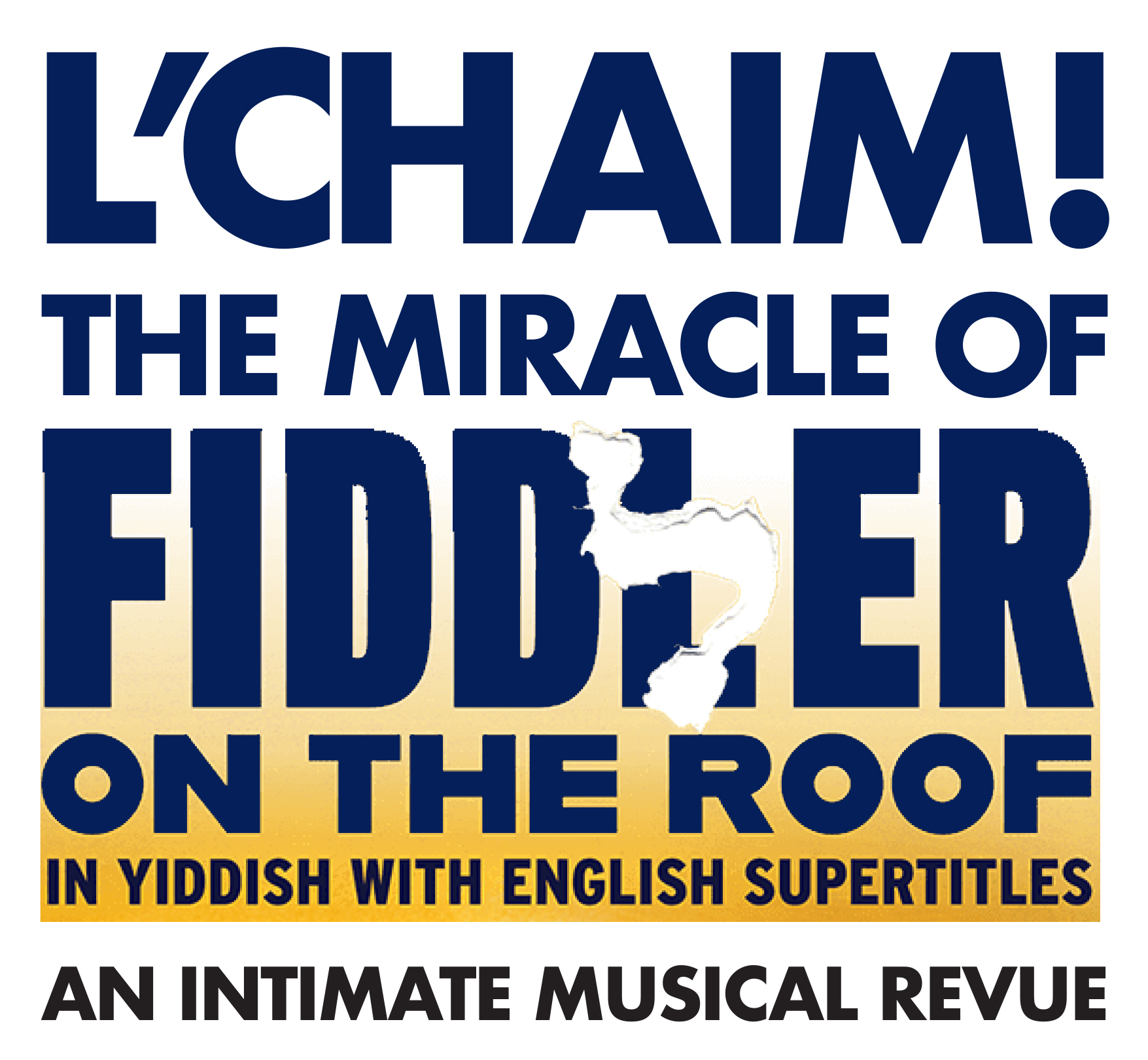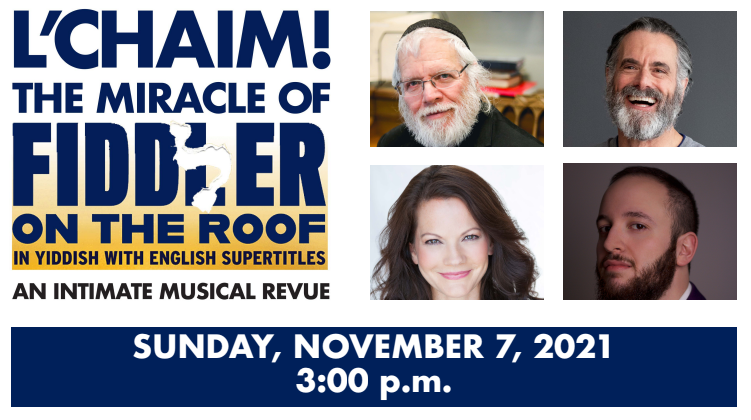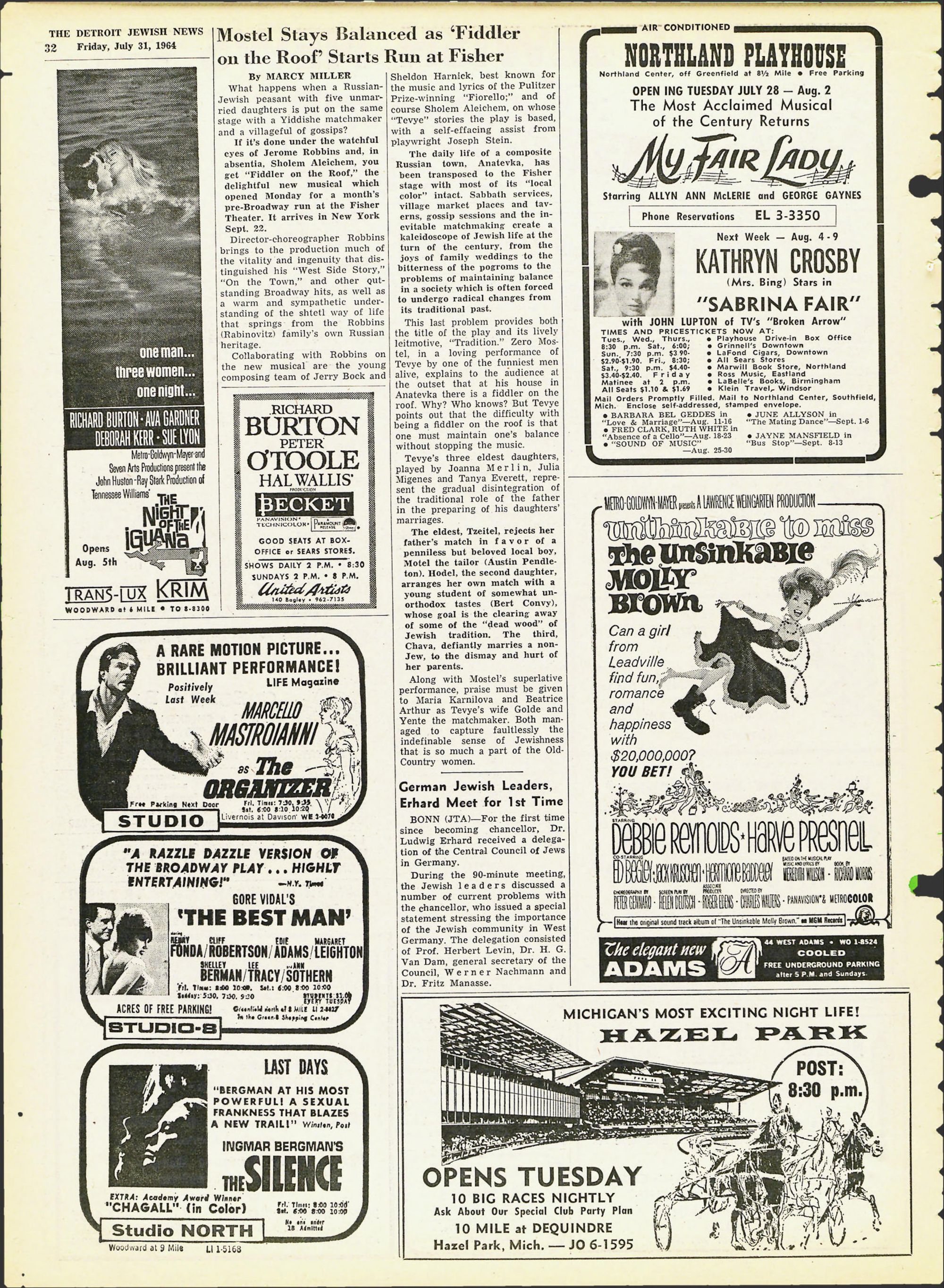Fiddler on the Roof was, in a way, born on West Grand Boulevard in August 1964. The play’s very first test run was at the Fisher Theatre and, initially, writers Jerry Bock and Sheldon Harnick felt the play needed serious tinkering before taking the show to New York. Jerry used to tell the story of how he took a walk down Woodward and decided he needed a new song for Tevye. Right there, he began writing “If I Were a Rich Man.”

I was skeptical when I first heard about the 2018 revival of Fiddler — in Yiddish. Nu?, I thought, how am I going to enjoy a play where I can’t understand a word?
Then I lucked into a couple tickets for the premiere in New York, a benefit for JDC. I figured, if I didn't go, all day long I'd biddy biddy bum.
Upon entering the theatre, I encountered huge monitors on each side of the stage, evidently for translations of the lyrics and dialogue. That was a positive sign, but then I worried that I was going to have to spend the whole night reading my way through the play.
But as soon as the lights dimmed and all the familiar players came out on stage, something unexpected happened ... I felt like I was seeing an original version of the show that never existed. The shtetl — Anatevka, of course — was a Yiddish-speaking village somewhere in Russia, not too far from where my ancestors lived. Anatevka was like a typical real-life Jewish shtetl in the region, home to over 100 other similar Jewish villages, all eventually wiped out by pograms or the Nazis.
Tevye comes out first and soon his family and fellow villagers begin strolling behind him. Although every word was in Yiddish, I was immediately touched in a way I hadn’t anticipated, not in spite of them speaking Yiddish, but precisely because of it. The feeling was deeply visceral, almost as if I was somehow looking through a lens and seeing and connecting like never before with my own ancestors (who, I’m told, lived for a time in the same room as their cow).
Within minutes, as those familiar with the play are well aware, Tevye and company burst into the grand opening number, Traditsye. I sat back, smiled and soaked it all in. For most of the show, I didn't even look at the translation. It didn’t matter what the words were; this was all emotion. And I found — to my surprise — that I would occasionally hear Yiddish words that I recognized, which was an extra thrill. As soon as Tevye asks “who is the person” who attends to traditional roles, and the choir roars “di tata'' or “di muter,” I knew this was going to be two hours of smiles and, no doubt, a few tears.
I know all the music to the play (doesn’t everyone?) so each song felt intimately familiar. It didn’t take long to fall into some kind of Yiddish trance, which grabs your heart and transports you to a beautiful but ultimately tragic story for so many European Jews. When, at the end, the villagers have to disperse to escape the coming pogrom, it’s sadly realistic to hear them proclaim, in Yiddish, their destinations. Chicago, New York (“We’ll be neighbors!”) … the Holy Land.
When the premiere ended, the entire cast came back, the house lights came on and Tevye opened up the floor to questions. The first and most obvious: How many of you knew Yiddish before? The answer blew me away. None of them. A number of them weren’t even Jewish. The shock of the audience was audible. Yiddish is not an easy language to learn, so this news was mind blowing, especially when you think about all the dialogue-intensive scenes.
Next obvious question: How did you learn Yiddish? How long did it take?
The simple answer: We studied — a lot, for the past year.
Following that early test run in Detroit, Fiddler of course went on to become an international sensation. It has been performed thousands of times all across the globe, including Africa, Asia (check out Japan’s Do You Love Me?), South America and Australia. It’s a mega-hit because it carries a message that touches a nerve, regardless of faith or ethnicity — tradition, family, love, struggle, resilience.
But I dare say that a Jew watching Fiddler — especially the Yiddish version — can relate in a uniquely personal way. We know these people in the play. They’re our grandparents, great-grandparents, great aunts, uncles, cousins. We love them; we pull for them; we laugh with them and we get our hearts broken over them. We see them dealing with incredible hardships - antisemitism, violence, expulsion - and although we know these stories are real, it’s not something most of us have ever witnessed or can even envision. But Yiddish Fiddler delivers that vision in a powerful and unforgettable way.
The play ended and my wife and I strolled back to the hotel. Broadway was packed, but the night was beautiful and we were still in the afterglow of a deeply meaningful experience. Suddenly we noticed the young couple walking right in front of us — Tevla’s daughter, Tzeitel, and Motel the tailor — arm in arm!
“Wait, you’re Tzeitel and Motel!” They smiled.
“And you’re a couple in real life?!?” (Not to pry.) They met at the audition and fell in love. I didn’t ask if di Shadkhnte (the Matchmaker) had anything to do with it.
They said they loved doing the Yiddish version, and it was clear they felt an extra connection to the story for portraying it in the muter tongue.
I totally understood. There’s magic in the Yiddish version of Fiddler — the magic of traditsye!



Comments
Sign in or become a Nu?Detroit member to join the conversation.
Just enter your email below to get a log in link.